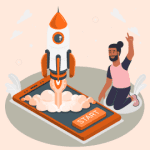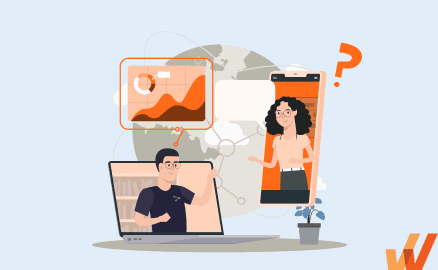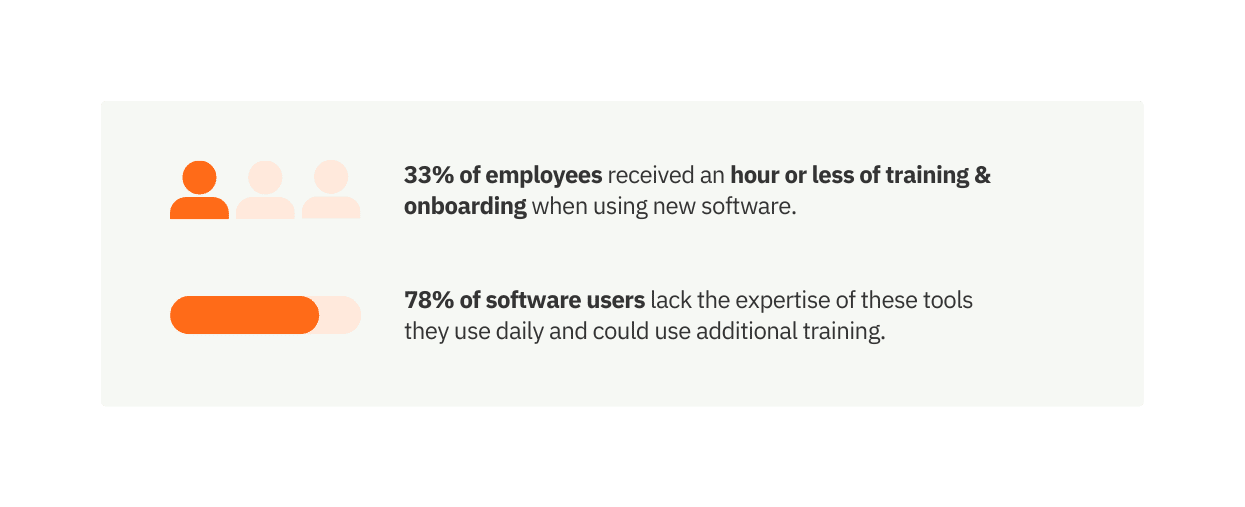

Levi Olmstead


Digital transformation is no longer a one-time event. It’s a constant, evolving process for organizations that presents opportunities, and IT challenges, for CIOs and enterprises at every turn.
Change is the only constant; organizations must prepare with more than a simple change management strategy. Organizations must view change projects from the perspective of customers and employees with a digital adoption-focused enablement change strategy that focuses on providing contextual end-user guidance, training, support, and overall experiences.
Change adoption is the last phase of the change management cycle and enables digital adoption of new technologies, digital workflows, organization structure changes, customer experiences, or any change implementation project. Change adoption supports the success and stickiness of new digital applications or workflows through in-app guidance, self-help user support, user behavior analytics, behavior changes, and reinforcement nudges.
Change management is the larger framework that includes researching, implementing, and adopting a change initiative. Change adoption focuses on the final phase of change management projects. It supports the successful integration of new digital technologies, structures, and workflows with contextual end-user support, upskilling end-users, understanding if a change is working as intended, and accelerating time-to-value.
For example, force field analysis is a change management technique, while in-app guidance is part of change adoption.
There are five critical stages of change adoption plans that enterprises must focus on to accelerate change adoption, including people transition, communication, launch, digital enablement and support, and continuous post-launch management.
In this stage, CIOs should prepare for the change by understanding why the change needs to happen, creating a change team to determine leadership and the skillsets needed to support the technology project, and who will be responsible for ensuring business process adoption happens.
This means mapping current-state processes, understanding what teams and team members will be most impacted from legacy application modernization, researching best practices from other companies that have done similar change projects, and bringing in talent to help the project succeed.
Next, enterprises must communicate the change to those most impacted. It’s essential to do this as far in advance as possible to gauge any resistance to change, give end-users and customers time to adjust and prepare, and collect feedback on the change project. This allows CIOs to collect the necessary information and insights from those most impacted by the change, integrate their suggestions, and include them in the change project.
The launch phase is where you design the IT roadmap for implementation and release. Set the launch date far in advance and have dedicated IT team members ready to support any issues. It’s wise to have a smaller beta launch before releasing the full launch to catch any unexpected bugs or issues.
The most critical adoption component is enabling your end-users, employees, and customers with the guidance, upskilling, and end-user support they need to adopt new applications and processes quickly. This means dedicating resources to create IT support, contextual user guidance, and building training materials for various types of users. As technology evolves, expect organizations to invest in digital enablement strategies and frameworks to support digital adoption and accelerate change.
According to our 2024 digital adoption trends report, 33% of employees said they received less than one hour of onboarding and training for new software implementations, and 78% of software end-users said they lacked the expertise to maximize the value from the digital tools critical to their responsibilities due to a lack of training.

For any change project, you should have digital transformation goals and KPIs to measure your success. This will highlight any issues as they happen, allowing you to identify and course-correct on issues. You should also invest in a product analytics platform to understand how users are adopting your new processes, using a new workflow, engaging with new software, etc.
Faster change adoption provides obvious benefits to organizations, but there are four main benefits a stellar change adoption strategy supports, including:
Change adoption is essential in minimizing downtime for enterprises. Transition periods or process changes often lead to system interruptions that cause significant downtime for employees and customers. Proactively planning and adopting change can help prevent such disruptions and keeps operations running smoothly.
This involves an organized approach that anticipates and prepares for potential hurdles in advance. Comprehensive change adoption includes training for employees, which allows them to quickly adapt to new systems or protocols, mitigating the risk of downtime.
Without a well-executed change adoption strategy, enterprises may face prolonged periods of low productivity and stalled operations, negatively affecting the bottom line.
Change adoption plays a key role in boosting employee efficiency and productivity. It focuses on helping employees understand, adapt, and embrace changes in the workplace, such as new technologies or procedures.
By implementing enterprise change management strategies, businesses can ensure a smoother transition, reducing confusion and resistance among the workforce. Proper training and communication can increase employees’ comfort and proficiency with new systems or methods, improving efficiency. Moreover, when employees are involved in the change process and understand its benefits, they will likely be more engaged and productive, contributing to organizational success.
In an ever-evolving business landscape, change is the only constant. Thus, change adoption is integral in preparing enterprises for the future. As markets evolve and technologies advance, businesses must stay ahead by adopting new strategies, tools, or models.
By cultivating a culture that is open to change and capable of adapting to change quickly, enterprises are better positioned to seize new opportunities and navigate challenges that may arise. Change adoption is not just about implementing the change itself but also fostering resilience and forward-thinking among employees, allowing the organization to thrive in the face of future change, and is a trait of digitally mature enterprises.
Adopting changes is critical in supporting enterprise digital strategies and maximizing the value of digital investments. As enterprises increasingly rely on technology to drive their operations and strategic initiatives, they must also focus on how these changes are adopted within the organization.
A well-planned change adoption strategy ensures that new systems and technologies are utilized to their full potential, reducing wastage of resources and improving ROI. It also involves equipping employees with the necessary skills and knowledge to leverage these digital tools effectively, enhancing operational excellence. It supports better alignment between IT strategy and business objectives, ensuring that technological changes contribute positively to the enterprise’s overall goals.
With a digital adoption platform (DAP) like Whatfix, enterprises can support change projects by enabling customer and employee end-users. A DAP is a no-code platform to create, launch, and analyze in-app guidance, train and upskill end-users, provide self-help user support, collect in-app feedback, and analyze user behavior and product usage.
Here is how a DAP enables enterprise change adoption strategies:
With Whatfix, you can create in-app guided overlays that help users learn a product’s interface, its capabilities, and contextual tasks for different types of users. For example, if you’re sales team is implementing a new CRM, you can create contextual guided onboarding tours and interactive walkthroughs personalized for each end-user type, such as sales operation leaders, AEs, CSMs, BDRs, and more, and that’re all contextually crafted for their roles and workflows.

For enterprise organizations, you can create consistent workflows with interactive guidance that branches across multiple software applications. For example, when finalizing a contract, you can create in-app guided walkthroughs that walk users through the contract finalization process from your ERP or CRM, through your e-signature tool, and back to your CRM.
Explore DAP employee use cases from real Whatfix customers.
We explore 25+ DAP uses cases that enable and support employees on their CRM, ERP, HCM, and more.

With a DAP like Whatfix, create in-app tips and pop-ups to announce company messages, process changes, task updates, and more. With smart tips, you can also ensure your end-users are updated on all workflow updates and changes, and provide contextual tips, information, and field validations that enable technology users to follow guidelines and rules and ensure data quality and compliance.

Sheila Dusseau, Head of Global Legal Operations at Ferring
With a DAP, enable your end-users with an embedded self-help wiki that overlays your applications. A self-help wiki integrates with your FAQ, knowledge base, user documentation, video tutorials, training, and more, allowing end-users to easily access, search, and find user support when and where they need it.

Your IT team can enables your end-users with a contextual self-help experience. For example, your AEs, sales ops managers, CSMs, and BDRs will all use your CRM in different ways and have contextual workflows.
To deflect support tickets that are commonly encountered and enable each type of user, a DAP presents contextual support articles and how-to documentation with self-help support. As time passes, you’ll be able to identify new support articles to write based upon common self-help searches that lack documentation. that you lack documentation or support articles on.
With Whatfix’s product analytics capabilities, IT teams and CIOs are enabled to make data-driven change and digital adoption decisions with a no-code user event tracking and analytics platform. This analytics provide insights into product usage, user journeys, user engagement and more to analyze, track, and improve digital adoption. Map your user flows, identify friction and dropoff points, create user cohorts, and track overall adoption of change projects and digital applications.





Thank you for subscribing!
Thank you for subscribing!